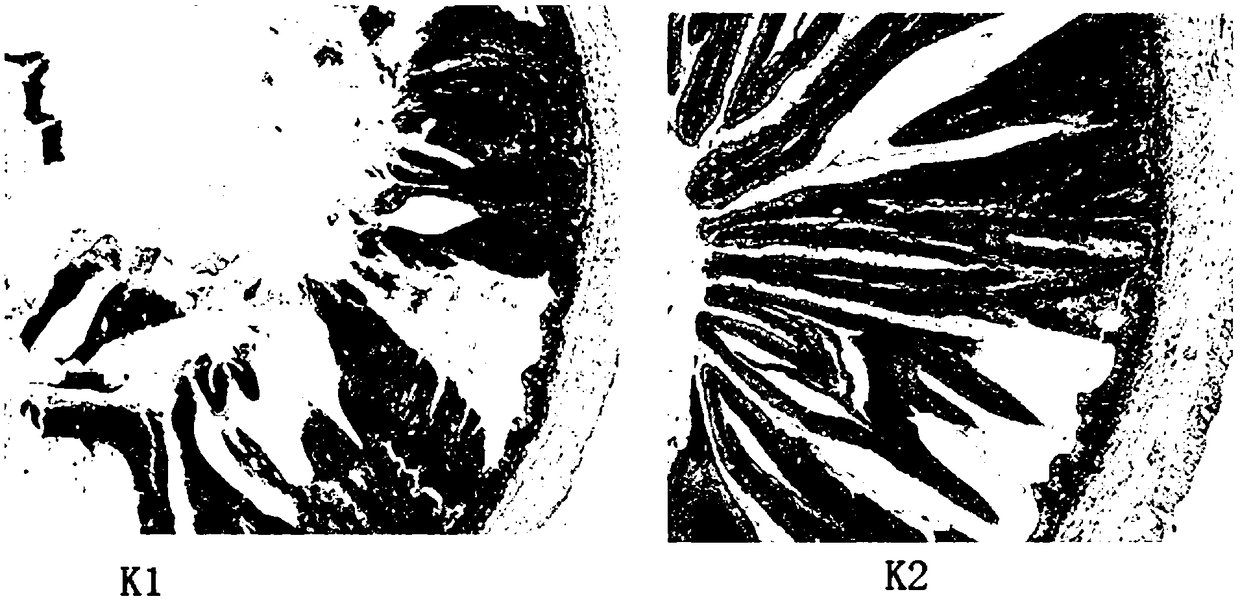Biological active environment-friendly aquatic feed preparation method
A technology for aquatic feed and biological activity, which is applied in animal feed, animal feed, climate change adaptation, etc. It can solve the problems of inconsistent detection indicators of biological fermentation raw materials, limit the application of biological fermentation technology, increase energy consumption due to addition, and achieve content High, the effect of reducing aquatic animal diseases and increasing viscosity
- Summary
- Abstract
- Description
- Claims
- Application Information
AI Technical Summary
Problems solved by technology
Method used
Image
Examples
preparation example Construction
[0023] A method for preparing biologically active and environmentally friendly aquatic feed, comprising the preparation of fermented wet-based soybean meal and the addition of fermented wet-based soybean meal to a complete feed, wherein the complete feed includes the following components in parts by mass: 12 parts of flour, large 1 part of soybean oil, 1 part of soybean lecithin oil, 28 parts of soybean meal, 8 parts of rice bran meal, 2 parts of fish meal, 3 parts of bentonite, 5 parts of premix, 10 parts of distiller's grains (DDGS), 33 parts of rapeseed meal;
[0024] Specifically include the following steps:
[0025] Preparation of fermented wet base soybean meal:
[0026] S1), strain activation, mixing the fermented strains of lactic acid bacteria, bacillus and saccharomyces with water at a mass ratio of 1:50, then adding a certain amount of molasses, stirring and mixing evenly, and then sealing the container Cultivate at a temperature of 30-37°C for 16-24 hours until th...
Embodiment 2
[0035] In this embodiment, the full-price feed in Example 1 is used as the control group, and 6% fermented wet-based soybean meal is added to the full-price feed to cultivate grass carp. Add 6% fermented wet-based soybean meal, which is recorded as K2 group, to study the effect of fermented wet-based soybean meal on the growth of grass carp, wherein the mass parts of conventional grass carp pellets are shown in Table 1, and Table 2 is the control group K1 and fermented wet-based soybean meal group The comparison of nutrients in K2, Table 3 is the comparison of grass carp growth performance between control group K1 and fermented wet-based soybean meal group K2. It can be seen from Table 3 that after adding fermented wet-based soybean meal to the full-price feed, the weight gain rate of grass carp , The specific growth rate showed an increasing trend, and the feed coefficient showed a decreasing trend, indicating that adding a certain amount of fermented wet-based soybean meal in...
PUM
 Login to View More
Login to View More Abstract
Description
Claims
Application Information
 Login to View More
Login to View More - R&D
- Intellectual Property
- Life Sciences
- Materials
- Tech Scout
- Unparalleled Data Quality
- Higher Quality Content
- 60% Fewer Hallucinations
Browse by: Latest US Patents, China's latest patents, Technical Efficacy Thesaurus, Application Domain, Technology Topic, Popular Technical Reports.
© 2025 PatSnap. All rights reserved.Legal|Privacy policy|Modern Slavery Act Transparency Statement|Sitemap|About US| Contact US: help@patsnap.com

